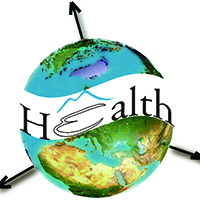Geospatial inequality of anaemia among children in Ethiopia

Accepted: 13 September 2021
HTML: 40
All claims expressed in this article are solely those of the authors and do not necessarily represent those of their affiliated organizations, or those of the publisher, the editors and the reviewers. Any product that may be evaluated in this article or claim that may be made by its manufacturer is not guaranteed or endorsed by the publisher.
Authors
Anaemia remains a severe public health problem among children in Ethiopia and targeted approaches, based on the distribution and specific risk factors for that setting are needed to efficiently target health interventions. An analysis was performed using Ethiopia Demographic and Health Survey 2016 data. Blood specimens for anaemia testing were collected from 9268 children aged 6-59 months. A child was considered as anaemic if the bloodhaemoglobin count was less than 11.0 g/dL. We applied Kulldorf's spatial scan statistics and used SaTScanTM to identify locations and estimate cluster sizes. In addition, we ran the local indicator of spatial association and the Getis-Ord Gi* statistics to detect and locate hotspots and multilevel multivariable analysis to identify risk factors for anaemia clustering. More than half of children aged 6-59 months (57%) were found to be anaemic in Ethiopia. We found significant geospatial inequality of anaemia among children and identified clusters (hotspots) in the eastern part of Ethiopia. The odds of anaemia among children found within the identified cluster was 1.5 times higher than children found outside the cluster. Women anaemia, stunting and high fertility were associated with anaemia clustering.
How to Cite
PAGEPress has chosen to apply the Creative Commons Attribution NonCommercial 4.0 International License (CC BY-NC 4.0) to all manuscripts to be published.
-
Bibian N. Robert, Anitah Cherono, Eda Mumo, Charles Mwandawiro, Collins Okoyo, Paul M. Gichuki, Justine l. Blanford, Robert W. Snow, Emelda A. Okiro, M. Kariuki NjengaPLOS ONE : 2023
-
Bilal Shikur Endris, Geert-Jan Dinant, Seifu H. Gebreyesus, Mark SpigtBMC Nutrition : 2022
-
Kenenisa Abdisa Kuse, Demie Seyoum Jima, Teshita Uke Chikako, John Elvis Hagan, Abdul-Aziz Seidu, Richard Gyan Aboagye, Bright Opoku AhinkorahChildren : 2022
-
Gayani Shashikala Amarasinghe, Thilini Chanchala Agampodi, Vasana Mendis, Suneth Buddhika AgampodiGeospatial Health : 2022
-
Shiferaw Tessema Negussie, Regassa Geda NigatuDiscover Social Science and Health : 2023

 https://doi.org/10.4081/gh.2021.1036
https://doi.org/10.4081/gh.2021.1036






